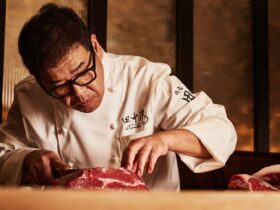The recent surge in popularity for single malt whisky has made us wonder if people know how to appreciate this fine “Water of Life” – here’s a crash course
There have been many famous exports from Scotland. Actors and actresses such as Ian McGregor, Sean Connery, Tilda Swinton, or even Adam Smith, the father of Modern Economics, have all made their mark on the world.
However, for me, the most important contribution of the Scots to humanity is Single Malt Scotch Whisky!
Single malts such as Glenfiddich, Macallan, Glenmorangie and others have been present in Asia for decades but recently there has been a surge in their popularity.
Departing from brands such as Hennessey or Johnny Walker, which represented the previous generation of drinkers, the younger mass affluent Asians are looking, perhaps, for something new to identify with. Enter single malts.
Personally, I have been sipping the water of life or ‘Uisgebaugh’ (Gaelic for malt whisky) for about two decades now. And, like most, I simply enjoyed the taste but didn’t delve into the details of the craft until recently when I had the opportunity to taste some of Scotland’s finest: Macallan’s Lalique 62-year-old and Glenfiddich’s 12, 15 and 18-year-olds.
It was in these tasting sessions that I developed a greater appreciation for the art – and science – behind the single malt Scotches, and here are some of the important basics to know.
1) Whisky or Whiskey?
Nope, it’s not a typographical error, nor is it an imitation from China. There are two ways to spell it.
Ireland and the USA spell it as “whiskey”; while everywhere else it’s “whisky”. Essentially, they both refer to the same category of distilled spirits.
2) There are Only 3 Types of Whisky
The first type of whisky is “Grain” whisky, made from a mash of different grains such as barley, wheat and maize, and processed in a continuous industrial process for volume and cost efficiency.
The second: “Malt” whisky made from only partially-germinated barley. Malt whisky is distilled in large batches and then stored in casks for long periods before bottling.
Now, when they are from a single distillery, it’s labelled as “single” malt whisky.
Lastly, “Blended” whisky, as its name suggests, is created by blending different malt whiskies and/or grain whiskies together.
Quite often, each bottle of “Blended” contains two-thirds or more of grain whisky plus the rest in malt whisky from different distillers for added flavour. Remember, grain whisky is faster and cheaper to produce.
Because it’s faster and cheaper to produce, the majority of the world’s whisky is blended.
3) Simplicity in Ingredients
There are only three ingredients allowed in malt whiskies: 1) Barley; 2) Yeast; and 3) Water. Don’t let anyone tell you otherwise.
All the flavour notes like “honey”, “pear”, “chocolate”, or “walnut” are not because the distillers put those ingredients in. Again – only three ingredients are allowed.
4) Wooden Casks
An important variable which contributes significantly to its taste is the wooden cask, in which the whisky matures. Unbeknownst to many whisky drinkers, most malt whiskies are stored in used bourbon oak casks from the USA or sherry oak casks from France or Spain!
There is hot demand for these used casks from sherry and bourbon makers and here’s why:
The bourbon and sherry removes much of the harshness of virgin wood upon first use, and imparts additional character into the malt whisky over time.
There are many other exotic combinations of pre-used casks (i.e. rum, cognac, port) used to impart different flavours. And often, during the maturation stage, the malt whisky is transferred from one type of cask to another. For instance, from bourbon cask to sherry cask, to increase its characteristics.
As the seasons change, over the years, the wooden cask expands and contracts with the changing temperature, which slowly releases additional flavour characteristics from the wood into the malt whisky.
5) Time to Mature
By British law, the whisky must mature for at least three years before it can be labelled as whisky. But many whiskies sold are older than that.
For instance, the oldest I’ve tasted is Macallan’s Lalique 62-year-old, which was casked just after the Second World War.
6) The Age on the Label
To maintain consistency, casks of malt whisky of different ages may be mixed together. However, the labelled age must reflect the age of the youngest batch in the mix.
So, if you are drinking 18-year-old Glenfiddich, there may be older batches of whisky mixed in but there cannot be any younger than 18 years old.
7) Shaping the character through the process
Most of the flavours and characteristics commonly used to describe finished products, such as “golden apple”, “honey”, or “vanilla”, are derived from the process of distilling, maturing, and finishing.
For instance, burning peat to dry the barley before processing creates the smoky and “peaty” flavour in many famous brands.
Glenfiddich’s 12-year-old, the world’s most popular single malt Scotch whisky, has fruity notes with a hint of pear from American and Spanish oak casks. Its 15-year-old Scotch whisky has honey, fruity notes from three types of casks: sherry, bourbon, and new oak. Then, it is mixed in their Solera Vat, which continuously combines previous batches with new 15-year-old casks.
8) Don’t Order a Shot. Order a Dram!
You might have seen many Western flicks in which cowboys order whisky by the shot. But when it comes to Scotch whisky, the preferred term is “dram”.
9) Don’t Put Ice in It! Maybe.
Purists will say that cooling it with ice will destroy its delicate flavour. The ideal way to enjoy a dram is to cup and warm the glass with your hand.
Honestly, it makes sense for a bunch of Scots in turtlenecks and kilts in the bitter cold of the Highlands to warm their drams by the fireplace. But in the tropics of Singapore? Not for me!
I always have my Scotch with a few ice cubes in lieu of a splash of water to open up the flavour.
10) Finally, the best Single Malt Scotch Whisky in the world is….
Based on my discussions with experts and exhaustive research in this field (wink, wink), the best single malt Scotch whisky in the world is… the one that you like the best!
With a constellation of different tastes and characteristics the universe of single malt whiskies offers, it is impossible to say which is the best.
Just find the one you enjoy the most! There lies the true pleasure of drinking single malt Scotch whisky.
Enjoy.
By Frank Young
ADVERTISEMENTS













Leave a Reply